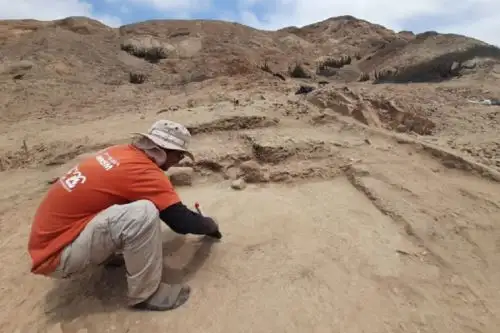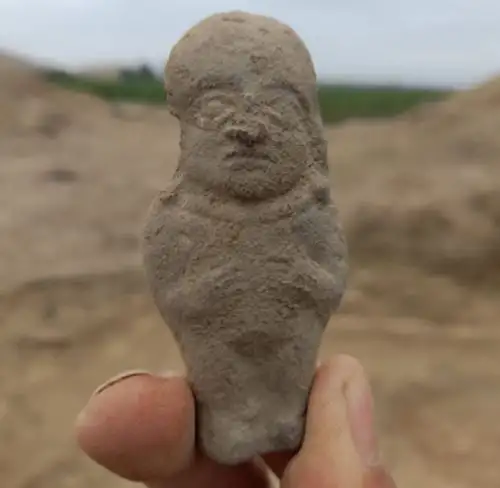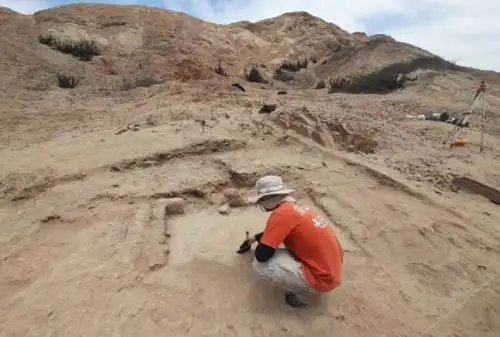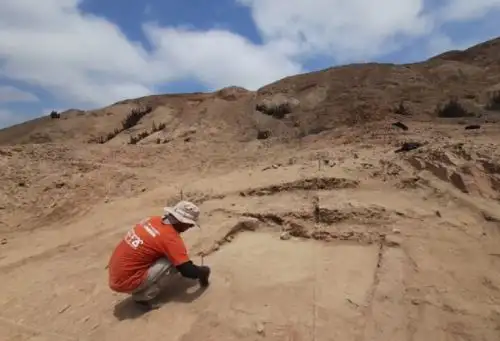08:11 | Chicama Valley (La Libertad region), Sep. 16.
New pottery production workshops of the Mochica culture, dating to the 5th and 6th centuries A.D. (between 400 and 600 A.D.), were discovered at Cerro Mayal, an archaeological site located in Chicama Valley, Peru's northern La Libertad region, by a team from the Chicama Archaeological Program of the National University of San Marcos (UNMSM).
"In this excavation campaign, we have discovered a series of pottery production spaces, made up of typical Mochica adobe walls enclosing work areas and covered by a large amount of discarded pottery," Chicama Archaeological Program Co-Director Henry Tantalean said in an interview with Andina News Agency.

The archaeologist added that tools for pottery production were also uncovered, along with an oval-shaped mud structure used to process clay or shape pottery prior to firing.
"We also found a large number of potter's plates, polishers and ceramic smoothers, molds to produce ceramic vessels, and stamps with deer and feline figures used to impress designs on the surface of the pottery while it was still wet and before it was fired. We also uncovered well-plastered clay preparation areas and combustion zones associated with open-air kiln firing," he explained.
According to Tantalean, this pottery, based on Rafael Larco Hoyle's relative ceramic sequence, is believed to belong to phases III and IV of the Mochica culture, characterized mainly by sculptural ceramics painted with cream over red.
Concentration of pottery workshops
The co-director noted that Cerro Mayal is associated with the major Mochica political-administrative center of Mocollope, a site with monumental features.
"It has been suggested for several decades that Cerro Mayal was a concentration of pottery workshops controlled by the Mochica elites residing in Mocollope and used in their celebrations," Tantalean stated.

"The pottery produced at Cerro Mayal was likely produced on a massive scale and served to be distributed to communities and exchanged for other products. That would be the economic model established for this site," he emphasized.
Tantalean recalled that Cerro Mayal was first excavated in 1992 and 1997 by a team under the leadership of archaeologists Glenn Russell and Banks Leonard.
"At that time, they carried out several excavation units, and although some radiocarbon dates for the site also exist, we have always been interested in expanding our understanding of how the settlement functioned and in establishing a more precise chronology using more modern carbon-14 methods, in addition to conducting microbotanical analyses," he said.

The specialist indicated that charcoal and plant samples collected during the excavation will undergo radiocarbon dating at a laboratory in the United States.
"That will provide us with a very specific chronology," he stated.
"This 2025, we began a first excavation season, working in a new area with a 6-by-4-meter excavation unit. We will remain here for two weeks. Our aim is to recover the Mochica pottery production contexts from phases III and IV," Tantalean emphasized.
Lastly, he confirmed that the Chicama Archaeological Program team will remain at Cerro Mayal for two weeks and will then backfill the site to begin lab work on classification, analysis, and detailed description of the materials found.

About the Chicama Archaeological Program
The Chicama Archaeological Program is co-directed by archaeologists Henry Tantalean and Carito Tavera Medina.
It includes the participation of archaeology graduates and undergraduates from UNMSM and the National University of Trujillo, as well as excavation assistants from the rural community of Garrapon in Casa Grande district.
The excavations are funded by UNMSM and financial contributions from the University of South Florida.
(FIN) LZD/MAO/JMP/MVB
Published: 9/16/2025